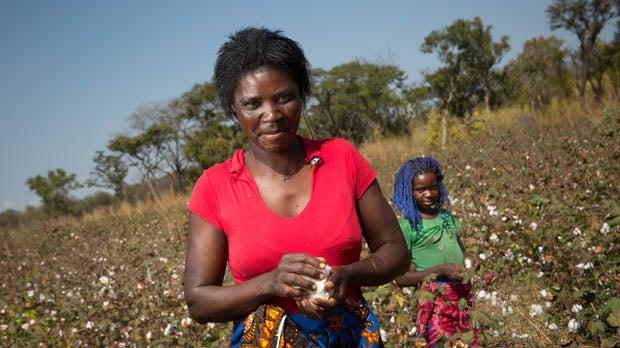Digital Innovations in Smallholder Agricultural Insurance
In recent years, enhancing smallholder families’ risk management strategies has become a priority for agricultural development programs. It has been shown that when smallholders insure against floods, pests and other risks that affect their agricultural livelihoods, they can invest more confidently in their farms or in nonagricultural activities in areas like trade, education or health.
However, offering agricultural insurance to smallholders is challenging. In traditional agricultural insurance, assessing farmers’ losses can be a serious logistical problem because it requires claims assessors to visit plots scattered across vast rural areas. Such challenges have limited the reach of smallholder agricultural insurance. There are about 1.5 billion individual smallholders in developing countries and, from those, a recent GIZ study estimates that 198 million have some form of agricultural insurance coverage. Most of the insured smallholders (193 million) are concentrated in China and India, thanks to large-scale government programs that subsidize premium costs. There are only about 1 million insured smallholders in the rest of Asia, 3.3 million in Latin America, and just 650,000 in Africa. For Africa, that's fewer than 1 percent of smallholders.

Index-based agricultural insurance emerged as a potential solution to the logistical challenges that have limited smallholders’ access to insurance. Instead of requiring insurance companies to assess losses at the farm level, this type of insurance calculates payouts using an index figure that is highly correlated with loss caused by an insured risk, such as a drought, flood or pests. Insurance companies have developed many types of indices over the years based on measures like precipitation, vegetation levels and regional yields. In each case, if an index suggests that farmers in a specific area have suffered losses covered by their policy, the insurance company can automatically issue compensation payments without needing to assess the loss at the farm. In addition to making claims settlements quicker and cheaper, this type of insurance makes them more objective because the predetermined indices cannot be manipulated by farmers or insurance companies.
The potential of index-based agricultural insurance is far from being fully realized, and providers are exploring digital innovations that could expand access to more smallholders. These innovations cluster around three broad insurance applications:
Macro level. At this level, the policy holder is a national or regional government or some high-level aggregator like a relief agency. The product insures a large area of land, like a state or a municipality, against certain risks. If the index figure triggers a payout, the recipient government or agency distributes the renumeration to enrolled smallholders. Usually, the payouts to farmers are fixed and cover only a share of their total loss. An interesting innovation at this level is NABARD in India, which is experimenting with digitizing premium payments and claim payouts.
Meso level. At this level, the policy holder is a regional aggregator, such as an agribusiness firm or a financial institution, that works with smallholders. If the policy holder is an agribusiness, a shock triggers a payout that the company uses to replace inputs purchased by smallholders (such as seeds or fertilizers) or to reimburse them for inputs. Offering this safety net to customers can help an agribusiness to differentiate itself from competitors. Another example, though less common, is when the insured asset is a financial institution’s smallholder loan portfolio. If defaults spike after a natural disaster, the insured financial institution can use its payout to recover loans. Some innovators at this level are exploring how an aggregator can use mobile technology to more accurately locate smallholder plots and determine which ones fall within the region covered by its policy. For example, Pula Advisors and its partners in Kenya and Nigeria are using interactive voice response technology to ask farmers to report landmarks near their plots when they enroll in insurance.
Micro level. Here the policy holder is the individual smallholder. Insurers may work with an aggregator like an agribusiness firm to deliver the product, but the actuarial analysis is based on the risks affecting individual smallholders. Insurers have gained significant experience at this level and are working to improve the accuracy with which their indices predict losses. Precision is important because if an index fails to trigger an insurance payout when an actual loss has occurred, the farmer will likely feel cheated and will not buy insurance again. One interesting innovation at this level is Econet Wireless in Zimbabwe, which offers individual farmer crop insurance as part of its Ecofarmer suite of mobile products. Other innovations include the use of satellite data to generate more accurate indices.
Over the coming years, CGAP foresees a steady rise in the application of digital technology to ease pain points in smallholder index insurance. CGAP and its partner, Pula Advisors, are contributing to this innovation process by exploring the application of satellite technology in meso-level agricultural insurance in Nigeria.
According to CGAP’s National Survey of Smallholder Households, only 1 percent of Nigerian smallholders have any form of an insurance plan, and agricultural insurance is the type reported as most needed. We will be using satellite technology to develop an algorithm that can accurately predict community average yields in areas where many smallholders farm so that insurers do not need to hire assessors to measure these average yields. The experiment will test the algorithm’s accuracy by comparing predictions to actual field measurements. Results will suggest whether the algorithm can be mainstreamed in current agricultural insurance policies, thereby cutting significant delivery costs and enabling scale. Or they will point to specific ways the algorithm needs to improve before it is mainstreamed by insurers.
Throughout the agricultural insurance space, digital technology is shaping the innovation process to reach smallholder families. Documenting and disseminating the challenges and the breakthroughs in these fast-paced innovation efforts will go a long way toward speeding the delivery of agricultural insurance to smallholders in developing countries.




Add new comment